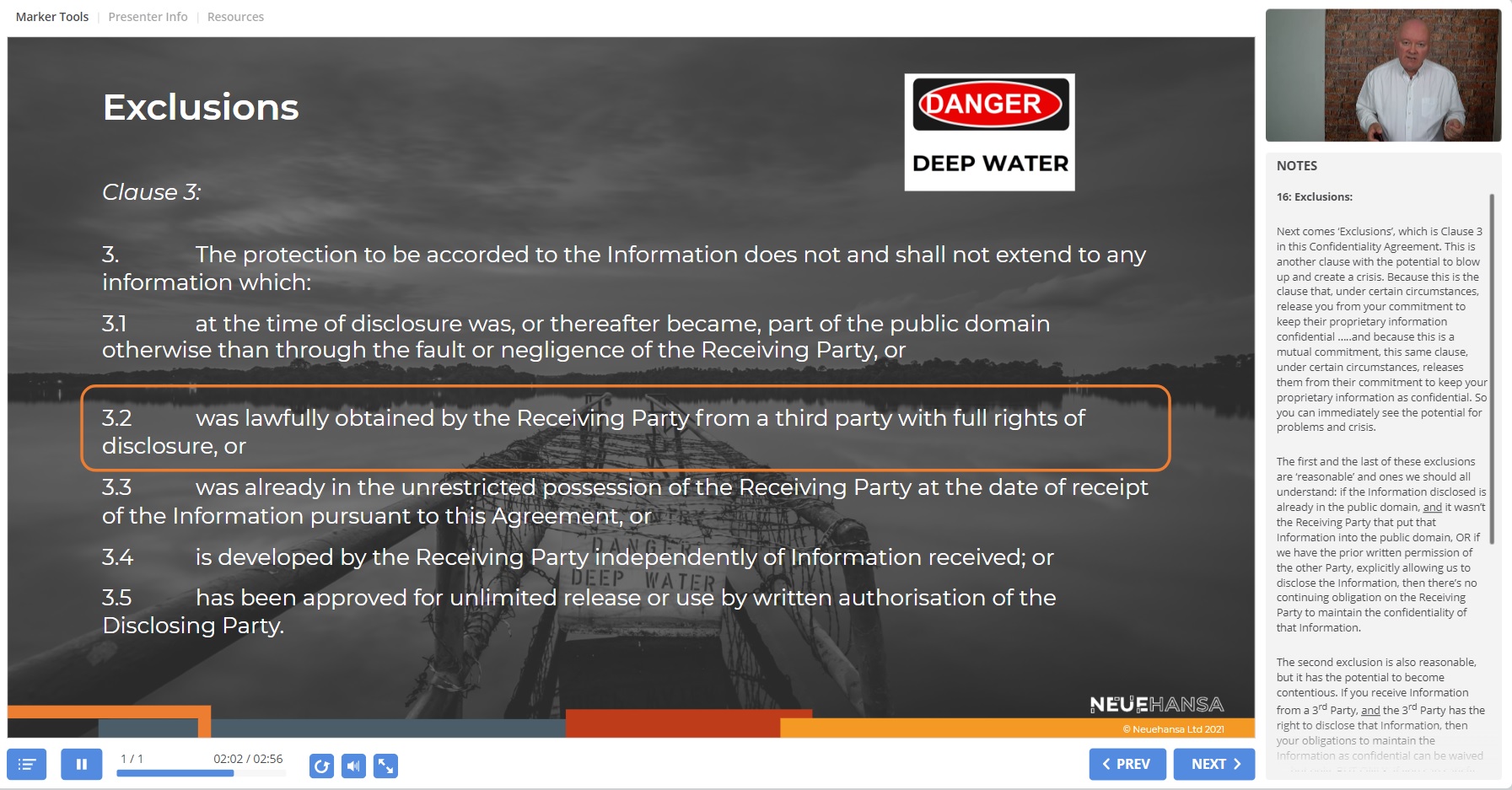Course Overview
Projects, organisations and businesses make progress by working in partnerships, with colleagues inside their own organisation as well as with partners outside their own organisation. To do that we need people to talk to people.
But, for all sorts of reasons, we may not necessarily want to share or to disclose all of the detail of what we do, and how we do it, with others. We may want to regulate what we disclose and when and how we disclose it. This becomes especially important when, to make progress, we may be asked to disclose details of intellectual property or intellectual assets or trade secrets which we have created and which differentiate our work from our competitors.
This course shows delegates how to work with partners, or customers, without leaking or losing their proprietary information. It shows delegates ways by which they can talk to people about what they do without making disclosures that might compromise their situation.
The course establishes a context for confidentiality. It highlights the personal basis on which decisions to share information are made. It examines the detail and mechanics of confidentiality agreements and reviews what is deemed current best practice ….and what is deemed to be ‘sharp practice’. It shows delegates how to hold “Conversations without Confidentiality Agreements” and finally it looks at “the other uses” of confidentiality agreements.
The two sessions in this course total around 90mins duration. Each session includes an AV presentation, with a full-featured media-player, presentation deck, quizzes which include explanations of “why the wrong answers are wrong” and “why the right answers are right”; a textbook as well as case studies, including an example Mutual Confidentiality Agreement and a Contract of Employment with a confidentiality clause and a restrictive covenant. This course requires you bring a clean note book or notepad, several pens or pencils and space to think.
